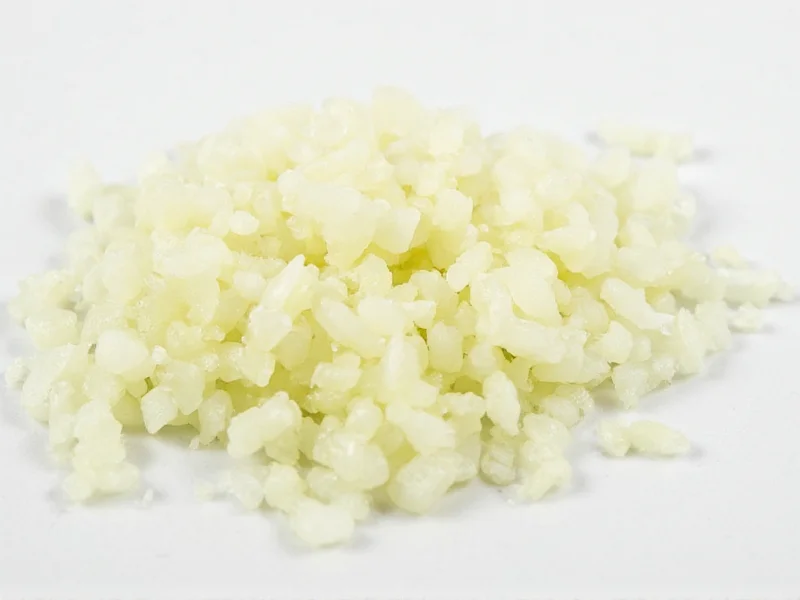Granulated onion is a dehydrated onion product with a coarse, sand-like texture between onion powder and dried onion flakes. Made by drying and grinding fresh onions, it rehydrates when cooked, delivering concentrated onion flavor without excess moisture. Unlike fine onion powder, granules maintain distinct particles that dissolve slowly, making them ideal for rubs, soups, and dishes requiring gradual flavor release.
Understanding what is granulated onion begins with recognizing its unique position in the spectrum of dried onion products. This versatile seasoning bridges the gap between fine onion powder and larger dried onion flakes, offering home cooks and professional chefs a valuable pantry staple with specific culinary advantages.
What Exactly Is Granulated Onion?
Granulated onion consists of dehydrated onions processed into uniform particles approximately 0.5-1.5mm in size. The production process involves:
- Peeling and washing fresh onions
- Slicing or dicing into consistent pieces
- Dehydrating at controlled temperatures (typically 140-160°F)
- Grinding to achieve the characteristic granular texture
- Screening to ensure uniform particle size
This careful processing preserves the onion's natural flavor compounds while removing moisture that would cause spoilage. The resulting product contains no additives or preservatives in its pure form, though commercial varieties sometimes include anti-caking agents.
Granulated Onion vs. Other Onion Forms
Understanding the differences between onion products prevents recipe mishaps. The key distinctions lie in particle size, rehydration properties, and flavor concentration:
| Product Type | Particle Size | Flavor Strength | Best Uses |
|---|---|---|---|
| Fresh Onion | N/A | Mild to strong (varies by type) | Raw applications, sautéing, caramelizing |
| Granulated Onion | 0.5-1.5mm | Moderate (5-7x fresh onion) | Rubs, soups, stews, sauces |
| Onion Powder | <0.5mm (fine) | Strong (8-10x fresh onion) | Dry rubs, spice blends, baking |
| Dried Onion Flakes | 2-5mm | Mild (3-4x fresh onion) | Reconstituted dishes, toppings |
Culinary Applications of Granulated Onion
When exploring what is granulated onion good for, consider these practical applications where its texture provides advantages over other forms:
- Dry Rubs: The coarse texture adheres better to meats than powder while distributing flavor more evenly than flakes
- Soups and Stews: Dissolves gradually during cooking, creating layered flavor development
- Sauces and Gravies: Provides consistent flavor without graininess that can occur with powder
- Bread and Dough: Adds onion flavor without affecting dough hydration like fresh onions would
- Seasoning Blends: Maintains separation from other spices better than fine powders
Chefs particularly value granulated onion for barbecue rubs, where the particles create a desirable crust while slowly releasing flavor during the smoking process. The texture also prevents the bitter notes that can emerge when onion powder burns at high temperatures.
Proper Storage Techniques
To maintain freshness and potency of granulated onion, follow these storage guidelines:
- Store in an airtight container away from light and moisture
- Keep in a cool, dark pantry (below 70°F/21°C is ideal)
- Use within 6-12 months for optimal flavor (though safe indefinitely if properly stored)
- Never store above the stove or near heat sources
Moisture is the primary enemy of dried seasonings. When properly stored, granulated onion maintains its distinctive particles without clumping. If you notice hardening or caking, the product has likely absorbed moisture and should be replaced for best results.
Substitution Guidelines
Understanding granulated onion substitution ratios prevents recipe failures. Use these conversions when you need to replace granulated onion or use it as a substitute:
- Granulated onion for fresh onion: 1 tablespoon granulated = ½ cup fresh chopped onion
- Granulated onion for onion powder: 1½ tablespoons granulated = 1 tablespoon powder
- Granulated onion for dried onion flakes: 1 tablespoon granulated = 2 tablespoons flakes
When substituting granulated onion for fresh in wet recipes like soups or stews, add 1-2 teaspoons of water per tablespoon of granulated onion to facilitate proper rehydration. For dry applications like rubs, no additional liquid is needed.
Nutritional Profile
While used in small quantities, granulated onion retains many nutritional benefits of fresh onions in concentrated form. Per tablespoon (7g):
- Calories: 23
- Carbohydrates: 5.8g
- Dietary Fiber: 1.3g
- Vitamin C: 3.5mg (6% DV)
- Calcium: 17mg (1% DV)
- Potassium: 72mg (2% DV)
The dehydration process concentrates certain compounds while reducing water-soluble vitamins. However, granulated onion maintains significant quercetin content, a flavonoid with antioxidant properties naturally present in onions.
Common Questions About Granulated Onion
Can I make granulated onion at home?
Yes, you can make homemade granulated onion by thinly slicing fresh onions, dehydrating at 140°F until completely dry and brittle, then processing in a food processor until reaching sand-like consistency. Sift through a fine mesh strainer to achieve uniform granule size, discarding any powder that falls through.
Why does my granulated onion clump together?
Clumping occurs when granulated onion absorbs moisture from the air. To prevent this, store in an airtight container with a silica gel packet. If clumping happens, break up the granules with a fork and store with additional moisture absorbers. Never use wet utensils when handling dried seasonings.
Is granulated onion the same as onion salt?
No, granulated onion contains only dehydrated onion with no additives, while onion salt is typically a 3:1 mixture of salt to onion powder. Using onion salt as a substitute for granulated onion will significantly increase sodium content and alter flavor balance in recipes.
Does granulated onion contain MSG or additives?
Pure granulated onion contains only dehydrated onions. However, some commercial brands add anti-caking agents like calcium silicate or silicon dioxide. Always check the ingredient label if you're avoiding additives. Reputable brands typically list only 'dehydrated onions' as the ingredient.
How can I tell if my granulated onion has gone bad?
Signs of spoiled granulated onion include darkened color, musty odor, hard clumping that can't be broken apart, or visible mold. Properly stored, it remains safe indefinitely but loses potency over time. If it no longer smells distinctly oniony when opened, it's lost flavor and should be replaced.











 浙公网安备
33010002000092号
浙公网安备
33010002000092号 浙B2-20120091-4
浙B2-20120091-4